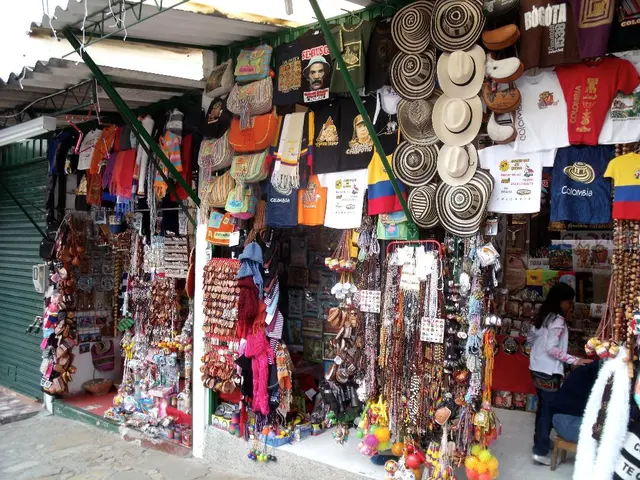5 methods persistently influencing retail amidst the pandemic:
A New Norm in Retail: Adapting to Hybrid Workplaces
As we usher in the new year, the COVID-19 pandemic appears to be a distant memory. Yet, behind the headlines of a post-pandemic world, the pandemic continues to cast a long shadow over the retail industry.
"Rarely in recent history has there been a disruptive event of such magnitude as the pandemic," says Sanford Stein, founder of Retail Speak. "The impact it has left on retail will not likely be lifted soon, if ever."
Here are some key ways the pandemic persistently shapes the retail landscape.
1. The Hybrid Workplace Revolution
Even as offices reopen and corporations demand in-person attendance, research shows that a hybrid workplace is the norm for many Americans.
Lee Peterson, executive vice president of thought leadership and marketing at WD Partners, said via email, "The biggest change from the pandemic is work from home, inspiring more local shopping or online shopping from home."
A survey by WD Partners found that zero respondents anticipated ever returning to a five-day office schedule. Instead, nearly 40% now frequent retail businesses within three miles of their homes, with 10% favoring malls.
This massive shift towards hybrid work has initiated a 21st-century version of the post-World War II suburbanization, complete with millennials and their young families.
"Their urban-to-suburban migration has been invigorated by work-from-home parents," says Stein. "With this newfound flexibility to shop closer to home, we can expect more retail to move towards bedroom communities rather than urban centers."
2. The Persistence of E-commerce
While store sales continue to dominate, many consumers have embraced online shopping, a shift that has significantly influenced the retail market. E-commerce sales growth is expected to double the rate of store-based sales growth through 2025, as per FTI Consulting's 2023 U.S. Online Retail Report.
"Once you've tried online shopping, you're not going back to that crap you used to put up with!" WD's Peterson quips. "Online is just too easy, and getting easier every day, while stores do nothing in terms of attracting new customers."
3. Inventory Challenges
While supply chain issues have improved, retailers still struggle with out-of-stock problems. In 2024, advanced AI technology is projected to create a more efficient and cost-effective supply chain, allowing retailers to make more accurate estimates for inventory needs.
4. BOPIS Endures
The Buy Online, Pick Up In Store (BOPIS) model has become an essential service for retailers during the pandemic and will remain so in the future. Target recently announced plans to introduce larger store formats with more backroom space for fulfillment.
However, retailers will likely scale back on store-based fulfillment due to its inefficiency compared to distribution center labor. Nonetheless, curbside and ship-from-store services will continue to be valuable during the holiday season and for shoppers seeking to avoid shipping delays.
5. The Uncertain Future of Self-Checkout
Self-checkout machines surged in popularity during the pandemic but have proven challenging due to theft concerns. In 2024, retailers may emphasize loss prevention over self-checkout, leading to a shift away from the technology.
"Retailers are recognizing that the costs of shrink associated with fewer associates outweigh the benefits of reducing labor costs," says David Gottlieb, chief revenue officer at Trax Retail.
In light of these changes, retailers must be nimble and adaptive to thrive in this new retail landscape.
6. Policy Changes in the Forefront
Government policies and regulations are being scrutinized for their impact on the retail industry as it navigates the post-pandemic world. Industry leaders are advocating for policies that support small businesses and promote fair competition, with a focus on fostering innovative technological solutions.
7. Labor Market Adjustments
The pandemic has led to a shift in labor demographics, with a higher number of people seeking job opportunities in the retail sector. This surge in job applications has resulted in increased competition, pushing businesses to rethink their hiring practices and offer more competitive compensation packages.
8. Technology and Innovation
Technology plays a pivotal role in shaping the future of retail, with advancements like artificial intelligence, virtual reality, and augmented reality becoming more prevalent. These innovations offer retailers opportunities to streamline operations, enhance customer experiences, and anticipate consumers' needs in real-time.
9. The Handshake Between Business and Finance
The finance industry has been instrumental in helping retailers recover from the economic effects of the pandemic. Collaborations between banks and retailers have focused on credit options, business loans, and financial advisory services to ensure a sustainable recovery for the retail sector.
10. The Unfolding of Space Economy
The retail industry's increasingly sweet spot with the space industry is being harnessed for growth opportunities. E-commerce retailers are exploring ways to capitalize on the rise of the space economy, with a focus on sustainability, logistics, and addressing the unique challenges of selling in zero gravity environments.
11. War and Trade
Geopolitical tensions and ongoing trade wars may impact the retail industry's global supply chain and operations. Business leaders are paying closer attention to international relations and advocating for policies that mitigate these risks, ensuring a stable environment for growth and scalability.
12. The Return of Aintree Street
As the pandemic subsides and life gradually normalizes, retailers anticipate the resurgence of brick-and-mortar stores, with Main Street USA returning to its former glory. The combination of physical and online retail experiences will likely dominate this "new normal," creating a harmonious blend of convenience and human interaction.








